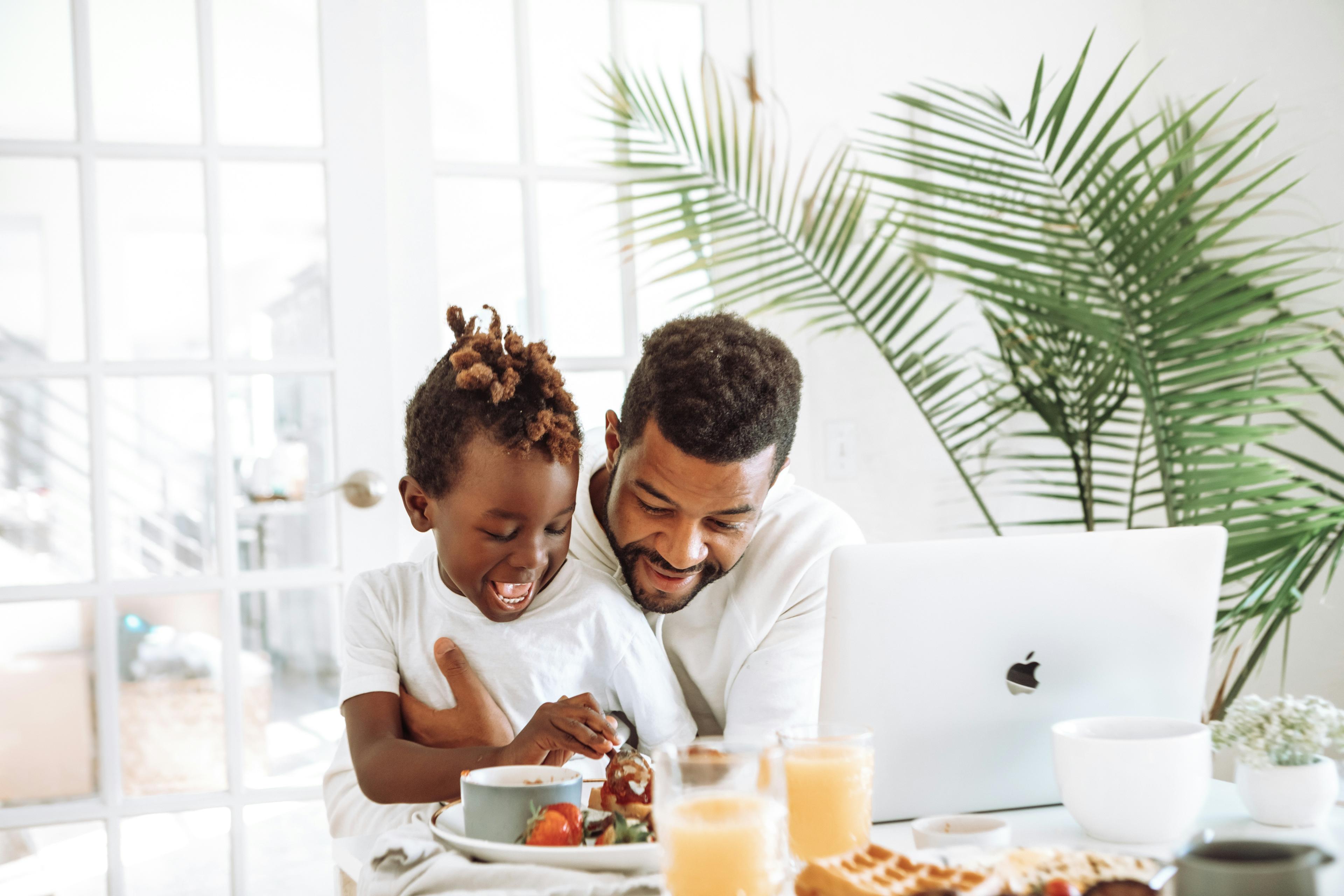Late at night, the house is finally quiet. Toys rest in uneven piles, dishes soak in the sink, and a single notification light blinks on the kitchen counter. A parent scrolls through their phone in the half dark, knowing they should sleep, knowing they still have laundry to move, and feeling a tug of guilt for wanting just ten more minutes of mindless escape. That window of in between time is where many parents live now, not quite resting, not quite tending to themselves, always hovering at the edge of another task.
It is easy to treat this as a normal season, a rite of passage that every family weathers. Yet the impact of limited personal time on parental wellbeing shows up in small, easily overlooked ways. It is in the shorter temper that surprises you, the constant background ache in your shoulders, the blank space where hobbies used to sit. When every day is designed around other people’s needs, there is less room for a parent’s nervous system to reset, and the home begins to revolve around exhaustion rather than intention.
The brain feels it first. Parenting already comes with a heavy mental load, and when there is no margin, that load starts to blur into static. A parent may find themselves rechecking school messages three times or forgetting simple items at the grocery store because there has been no uninterrupted moment to sort thoughts into place. Every interruption, every half finished task, keeps the mind in a state of low level alert. Over time, that state becomes the default, and a relaxed mind starts to feel like a distant memory.
Emotional wellbeing trails close behind. Without personal time, feelings rarely complete their full cycle. Frustration gets swallowed because there is a bedtime to manage, sadness gets postponed because there is a lunchbox to pack, delight barely gets noticed because the next responsibility arrives before the last one has landed. Parents begin to move through their homes like project managers rather than people. The result is a sense of numbness that can be tricky to name, a quiet disconnection from joy even when life looks full from the outside.
Identity is another gentle casualty. Before children, many adults held clear markers of who they were, in work, in hobbies, in friendships, in the way they decorated their homes. Once parenting begins, these markers are often pushed into the corners of the day. When there is no personal time, the corners start to disappear. A parent who once loved painting may realize it has been years since they opened a sketchbook. Someone who felt grounded by reading may only reach for parenting articles and school notices. The self that existed before caregiving does not vanish, yet it can feel pressed between the pages of a life that now runs on tight margins.
Relationships inside the home absorb this strain as well. With limited time, it is harder to meet children from a place of surplus. A parent who has not had a single quiet moment to themselves can still be loving, but patience wears thinner. A spilled cup of juice or a sibling argument feels heavier than it logically should, not because the parent is uncaring, but because they are operating on emotional credit. After the flare of irritation comes the familiar wave of guilt, a loop that chips away at wellbeing and confidence over time.
Partnerships feel the compression too. Many couples with young children discover that their conversations revolve around logistics. Who is handling the school run, who is paying which bill, who is free to take the next day off if someone falls sick. The softer parts of a relationship, shared humor, curiosity about each other’s inner world, the sense of being teammates rather than co managers, become harder to access when both people are depleted. It is difficult to feel romantic when every evening dissolves into emails, tidying, and half hearted scrolling before bed.
The physical environment of the home often amplifies these pressures. In many households, spaces are optimized for convenience rather than restoration. The living room becomes a storage zone for toys, chargers, and laundry baskets. The bedroom turns into an overflow office. The kitchen counters collect all the small decisions no one has had the time to make. When there is no dedicated corner that says this is where you can breathe, parents are left without a visual cue to pause. The home continues to ask for energy without offering many places for that energy to replenish.
At the same time, there is a quiet opportunity hidden inside this reality. If a home can drain a parent, it can also be rearranged to support them. Personal time does not always have to mean long, uninterrupted hours. For many parents, it begins with reclaiming the smallest of edges. That might look like turning the first ten minutes after the children are in bed into a consistent, device free ritual, instead of letting that time dissolve into chores and notifications. It might be as simple as lighting a candle at the dining table once the dishes are done, sitting down with a glass of water, and letting the body register that the work of the day has shifted gears.
These rituals are not grand solutions, yet they carry a structural effect. When the mind knows that a micro pocket of ease is coming, even if it is only for a short stretch, the day feels less like an endless corridor. Parents start to experience their evenings not only as a second shift, but as a rhythm with a small exhale built into it. Over time, that exhale can lengthen, especially if the household begins to treat it as a non negotiable part of family life rather than a luxury that can be traded away at the first sign of chaos.
Morning and night often hold the most promise for these pockets of time. A parent who wakes just fifteen minutes before everyone else may use that window to stretch, journal, or simply drink coffee in silence without touching a screen. Another might choose to keep the last fifteen minutes before sleep sacred, reading a chapter of a novel or listening to gentle music instead of scrolling through more information. These choices do not change the number of hours in a day, but they shift the emotional quality of those hours, which is where wellbeing lives.
Sharing the mental and physical load also becomes part of the design. When chores and caregiving are concentrated in one pair of hands, personal time evaporates quickly. Small, visible systems can help redistribute this. A simple weekly reset where the family gathers for ten minutes to clear surfaces together can turn tidying from an invisible solo burden into a shared rhythm. Older children might be invited to own small but meaningful tasks, such as setting the table or watering plants. The goal is not perfection, but a sense that the parent is not the only engine keeping the home running.
Technology can either erode or protect these efforts. Constant notifications slice through any fragile moment of rest. Choosing one or two zones in the home as low tech spaces can give parents a chance to actually arrive in their own company. A bedroom with the phones charging outside, a balcony chair with no screen nearby, even a bathroom shelf with a book instead of a device, all signal to the nervous system that this is a place where nothing new needs to be responded to. The absence of digital noise makes the limited personal time that does exist feel more nourishing.
Community forms another layer of support. Many parents carry their load quietly, unsure who to ask for help or convinced that everyone else is coping better. Yet small, practical exchanges can make a real difference. A neighbor who swaps an hour of playtime in the park, grandparents who take the children for an occasional afternoon, or a friend who shares school run duties one day a week, all carve out tangible minutes of breathing space. These arrangements do not always look like a traditional village, yet they can function like one, spreading the weight of care across more shoulders.
It is also important to recognize that not every season of parenting will offer the same amount of personal time. Newborn months and certain phases of illness or transition come with tighter margins by nature. In those periods, parental wellbeing may depend more on gentler expectations than on perfect routines. A parent might decide that during this chapter, the house will be less tidy, hobbies will pause, and the only non negotiable ritual is a hot shower at the end of the day. Naming this openly can reduce the quiet self criticism that often accompanies survival mode.
As children grow, the shape of available time shifts again. A primary school aged child may no longer require constant physical presence, yet they might need more emotional check ins. Parents can experiment with pockets of co existing solitude, such as reading side by side on the couch or working on separate projects at the same table. This allows the adult to reconnect with their own interests while still being accessible, blurring the line between personal time and family time in a way that feels more sustainable.
Perhaps the most tender part of this conversation is the question of what kind of time actually restores each parent. Some people are nourished by solitude, others feel more alive after a conversation with a friend, a walk outside, or a creative project. Limited hours make this clarity even more important. When a rare free moment appears, it helps to already know which activities refill the inner well and which ones quietly drain it further. A few minutes spent on something truly satisfying can do more for wellbeing than an hour lost to passive distraction.
In the end, parental wellbeing is not only about how much time is available, but about how that time is held inside the home. A house that makes room for small pauses, that treats a parent’s rest as essential instead of optional, becomes a softer place for everyone who lives there. Children feel the difference when their caregivers are slightly less frayed. Partners feel it when there is just a bit more humor and tenderness in the air. The impact of limited personal time on parental wellbeing does not have to be a fixed story. With small, intentional tweaks to routines, spaces, and expectations, the home can start to give some of that time back.
Imagine that late night kitchen again. The dishes are still there, but the phone is resting quietly out of reach. A lamp casts a warm circle on the table, and for ten short minutes, a parent sits with their thoughts, their breath, and the gentle sound of the house settling. It is not a grand reset, and it does not erase the fatigue of the day. Yet in that small circle of light, something important is happening. The parent is no longer just moving through tasks. They are being a person inside their own life, and that is where wellbeing begins to slowly take root again.














